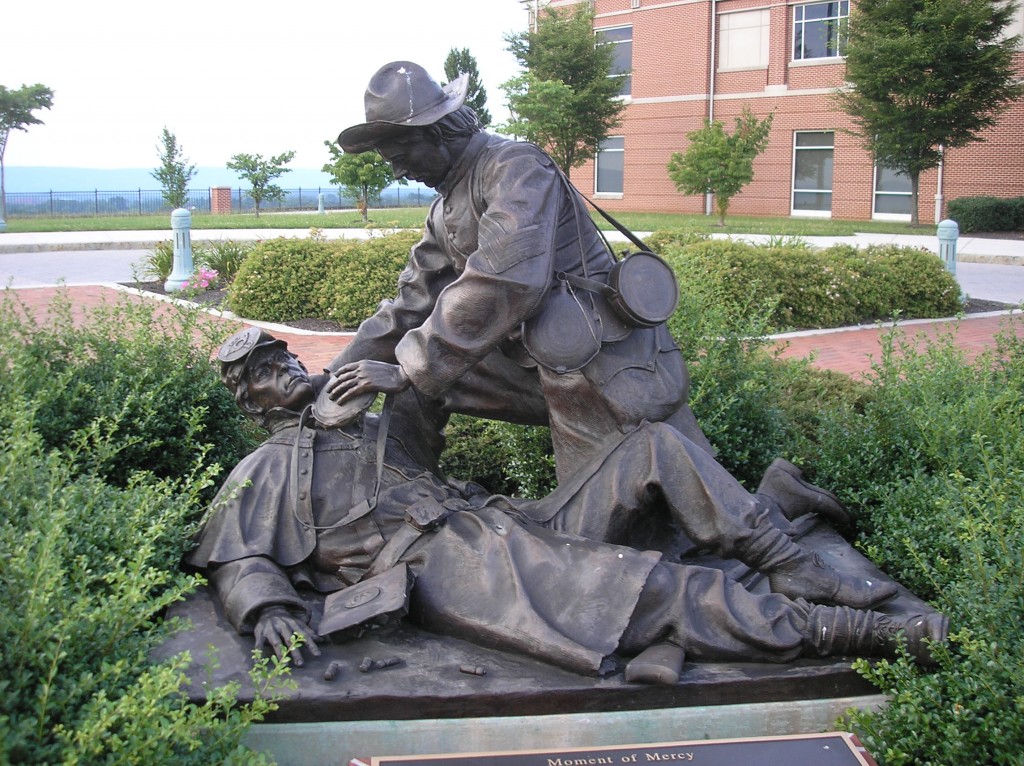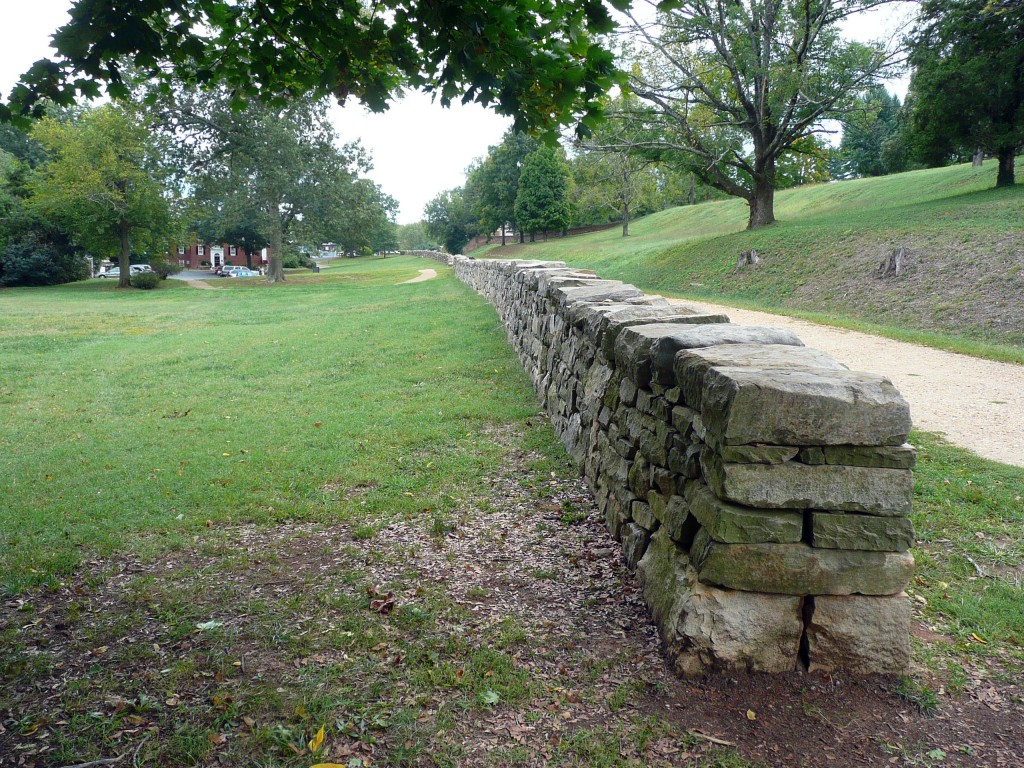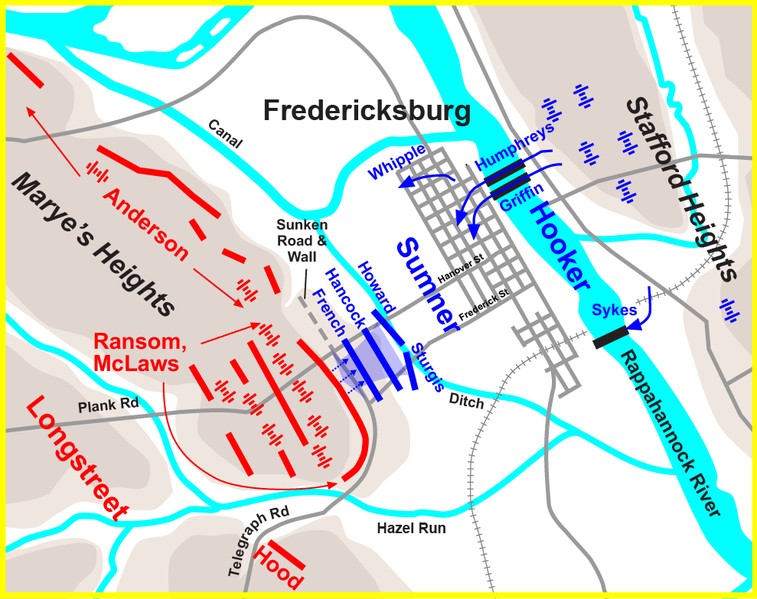National Civil War Museum – Moment of Mercy
Posted By Norman Gasbarro on December 21, 2010
The National Civil War Museum is located high on a hilltop overlooking Harrisburg, Dauphin County, Pennsylvania. The museum aims to provide a balanced view and to inspire lifelong learning through preservation and research about the Civil War. It has become a national destination for “families, students, civil war enthusiasts and historians to experience and research the culture and history of the American Civil War.”
On the grounds of the museum near the front entrance is a centerpiece sculpture entitled “Moment of Mercy.” This is a depiction of a selfless act of a solider of the Confederacy who during a lull in the Battle of Fredericksburg, risked his life to give water to wounded Union soldiers who were lying wounded and dying in a “no man’s land” between the opposing armies.
Moment of Mercy
By Sculptor Terry Jones
The Battle of Fredericksburg, Virginia, in December of 1862, was one of the bloodier engagements of the American Civil War. On December 13th, Federal troops made repeated frontal assaults against Confederate positions behind the stone walls along the Sunken Road at Marye’s Heights. In five hours an estimated 6300 Union soldiers lay dead or wounded on the battlefield. As darkness approached, a light snow fell and the temperatures dropped to near zero. All through the frigid gloom, injured men cried in agony. “Help,” “Water,” “Somebody, please help.” For one Union Commander that night was forever etched in his memory. “My ears were filled with the cries and groans of the wounded, and the ghastly faces of the dead almost made a wall around me.”
By the afternoon of December 14th, Sergeant Richard R. Kirkland of the 2nd South Carolina Infantry could no longer bear those mournful cries. Shortly after mid-day, Kirkland secured permission from his commander to take water to those in need. Filling as many canteens as he could carry, Kirkland hurtled the stone wall and ran to the aid of wounded Union soldiers. Shots rang out from the Federal lines. Only when the purpose of the Confederate’s errand became readily apparent, did the Union commander shout down the line: “Don’t shoot that man, he’s too brave to die. “Then, for ninety minutes the battlefield was quiet. Both sides observed a solemn truce as the nineteen year old sergeant turned Good Samaritan tenderly ministered to enemy wounded soldiers in what was most assuredly a “moment of mercy.”
Soldiers in blue and soldiers in gray repeated this incident many times throughout the Civil War. This Moment of mercy sculpture pays homage to them and the uniquely American spirit of aiding those in need.
Sponsored by The John Crain Kunkel Foundation. C. 2001
Many soldiers from the Lykens Valley fought at the Battle of Fredericksburg which took place in the winter preceding Lee’s venture into Pennsylvania and engagement at Gettysburg, July 1863. Commanding one of the regiments at Fredericksburg was Col. Benjamin C. Christ of the 50th Pennsylvania Infantry.
The sunken road on Marye’s Heights, Fredericksburg, Virginia (Fredericksburg and Spotsylvania National Military Park). During the Battle of Fredericksburg, 3000 Confederate troops were lined up in multiple ranks behind the stone wall for about 600 yards, and another 3000 were atop the slope behind it, along with their artillery. From: Wikipedia. Picture was released into public domain by copyright holder.
Map of the Battle of Fredericksburg, 13 December 1862, showing position of troops before Sumner’s Assault. Drawn in Adobe Illustrator CS5 by Hal Jespersen. Posted on Wikipedia with permission to repost.
 ;
;







Thank you for posting this about Richard Kirkland. Being from Kershaw County, I am humbled by his Christian act. Yet, here few talk about it. What a shame! What lesson are we missing by not recognizing his act and what this act can mean in our lives today.
He was called Dick by his friends. The first Confederate camp was actually called The Dick Kirkland SCV Camp. Later changed to Richard Kirkland Camp.
When the Yankees came through this area, his parents house was a few miles above Camden. When the Yankees learned whose house it belonged to, being the parents of Richard Rowland Kirkland, a guard was placed to protect the house.
Shows and tells us that the Yankees knew of Richard’s deed though not mentioned in official transcripts ,etc.